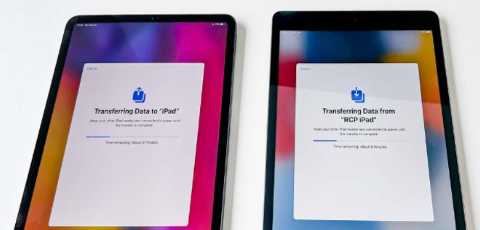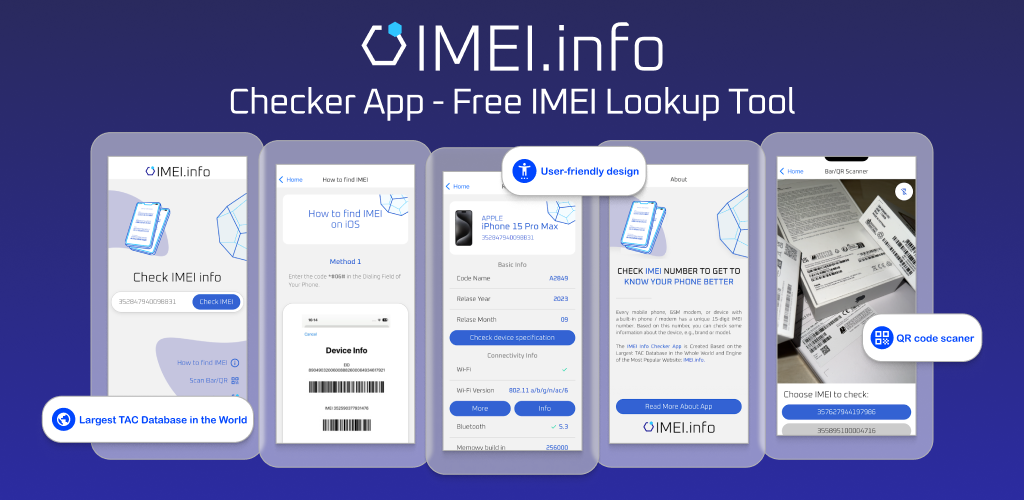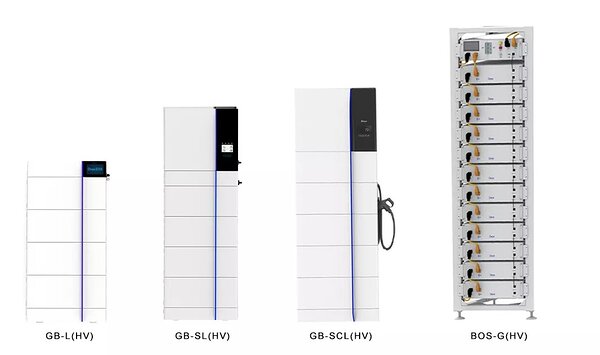In the world of energy storage, battery systems have emerged as a game changer. You've probably noticed this rise in popularity, whether it's electric cars zipping past you on the highway or news about renewable power plants harnessing battery technology. As we move towards a society that's increasingly reliant on sustainable and reliable energy sources, understanding different types of battery energy storage systems becomes crucial.
There's no one-size-fits-all when it comes to these systems. They're designed with specific applications in mind, each presenting unique advantages and limitations. From lead-acid batteries that have been around for over 150 years to state-of-the-art lithium-ion batteries powering modern gadgets and vehicles, the variety is impressive.
But what exactly are these different types and how do they work? What sets them apart from each other? Throughout this article, we'll delve into these questions and more. By gaining insight into various battery technologies, you're not just expanding your knowledge but also making informed decisions about their use in your life or business.
Understanding Battery Energy Storage Systems
Dive headfirst into the world of battery energy storage systems, a revolutionary technology that's changing how we use and store energy. You've probably heard about these systems before but might not fully grasp what they are or how they function. So let's break it down.
Essentially, battery energy storage systems (BESS) capture and store electricity for later use. Think of them as giant rechargeable batteries that can be connected to renewable power sources like solar panels or wind turbines, or even the traditional electric grid. They're designed to store surplus power when production outstrips demand - say, on an unusually sunny day - and release it back into the grid when needed.
There are several types of BESS, each with its own strengths and weaknesses:
- Lithium-ion Batteries: These are currently the most common type of BESS due to their high efficiency and declining cost. However, they have a relatively short lifespan compared to other options.
- Flow Batteries: Known for their long lifespan and scalability, flow batteries can be recharged indefinitely without losing capacity. But they're also more costly upfront than lithium-ion batteries.
- Lead-Acid Batteries: While these are cheaper than both lithium-ion and flow batteries, lead-acid options offer less efficiency and have a shorter lifespan.
| Type | Efficiency | Lifespan | Cost |
| Lithium-ion | High | Short | Medium |
| Flow | Medium | Long | High |
| Lead-Acid | Low | Short | Low |
The choice between these different types depends on your specific needs: budget constraints might push you towards lead-acid technologies while longevity considerations could favor flow batteries instead. Ultimately though, all provide an innovative way to store excess energy for future use – helping us make better use of renewable resources while lowering our reliance on fossil fuels.
Primary Types of Battery Energy Storage Systems
Diving right into the topic, there are numerous types of battery energy storage systems currently on the market. Each type is unique in its own right, offering a variety of strengths and weaknesses depending on the application.
First up, we have Lithium-Ion batteries. They're one of the most popular choices for energy storage due to their high energy density and long cycle life. What's more, they've seen significant advancements in recent years that make them even more efficient.
Next on our list are Lead-Acid batteries. You might be familiar with these as they've been around for quite some time now. They offer a lower upfront cost compared to other types but bear in mind that they also have shorter lifespans and lower energy density.
Let’s not forget Sodium-Sulfur (NaS) batteries either! These hot commodities operate at high temperatures but offer an impressive energy capacity and cycle life. However, their operating temperature requirements can lead to additional costs for cooling measures.
- Lithium-Ion Batteries
- High Energy Density
- Long Cycle Life
- Recent Technological Advancements
- Lead-Acid Batteries
- Lower Upfront Cost
- Shorter Lifespan
- Lower Energy Density
- Sodium-Sulfur (NaS) Batteries
- High Operating Temperature
- Impressive Energy Capacity
- Possible Additional Cooling Costs
Lastly, we have Flow batteries which use a liquid electrolyte solution to store energy. Their standout feature is their ability to independently scale power and energy capacities which makes them incredibly versatile.
So there you have it! The primary types of battery storage systems encapsulate a wide range of technologies each brimming with potential for diverse applications.
Lead-Acid Batteries: Pros and Cons
Let's dive right into the world of lead-acid batteries. They've been around for a long time, haven't they? In fact, these types of batteries have powered our vehicles and stored energy for renewable power systems for over 150 years. But why have they become so popular?
First off, you can't deny their cost-effectiveness. When it comes to dollars per kilowatt-hour, lead-acid batteries are among the most affordable on the market today.
- Cost per kWh (approximate):
- Lead-Acid: $100–$150
- Lithium-Ion: $300–$400
- Nickel Cadmium: $700–$900
But that's not all there is to them. They're known for their reliability and ability to deliver high surge currents thanks to their low internal impedance. That's quite a feat!
But let's be honest here - it isn't all sunshine and rainbows with lead-acid batteries. There are some downsides you need to be aware of. For starters, they don't handle deep discharges well - if you regularly deplete your battery below 50%, you could significantly shorten its lifespan.
And then there's the weight issue. Weighing in at up to twice as much as other battery types, they're far from ideal when space or weight considerations come into play.
Lastly, remember these batteries require regular maintenance to remain in top shape – neglect this obligation and you may find yourself shopping for a replacement sooner than expected.
- Weight comparison (1kWh storage capacity):
- Lead-Acid: 25-30kg
- Lithium-Ion: 10-15kg
- Nickel Cadmium: 20-25kg
So while lead-acid batteries might seem like an attractive option due to their affordability and reliability, it's important to weigh these advantages against the potential drawbacks before making your decision.
Lithium-Ion Batteries: A Detailed Analysis
In the realm of battery energy storage systems, lithium-ion batteries hold a position of prominence. You'll find them in everything from your handheld devices to electric cars, serving as the backbone for many of our modern conveniences. So what makes them so noteworthy?
To begin with, lithium-ion batteries offer high energy density. This means they can store more energy in a smaller space compared to other battery types - an essential trait for portable devices. Plus, their relatively low self-discharge rate ensures they retain their charge for longer periods.
Here's a quick comparison:
| Battery Type | Energy Density (Wh/kg) | Self-discharge Rate (% per month) |
| Lithium-ion | 150 - 200 | 2 |
| Nickel-Cadmium | 40-60 | 20 |
But it's not just about the numbers; there are practical benefits too. For instance, lithium-ion batteries don't require "memory effect" conditioning and have a low maintenance need which makes them user-friendly.
However, these batteries aren’t without drawbacks. They're sensitive to high temperatures and overcharging - factors that can drastically reduce their lifespan or even cause safety concerns like overheating or fires.
Let’s break down some pros and cons:
Pros
- High energy density
- Low self-discharge rate
- No memory effect
Cons
- Sensitive to high temperatures
- Risk of overcharging
- Higher cost than some other types
Despite these challenges, advancements in technology continue to enhance the performance and safety aspects of lithium-ion batteries — making them an indispensable part of our tech-driven lifestyle.
Nickel-Based Batteries: An Overview
In the realm of battery energy storage systems, you'll find that nickel-based batteries hold a significant position. These powerhouses, primarily Nickel-Cadmium (NiCd) and Nickel-Metal Hydride (NiMH), have been on the scene for decades. They've been powering everything from handheld devices to electric vehicles with their robustness and reliability.
Diving into specifics, NiCd batteries are famous for their high discharge rate capability. You'd be amazed at how they can deliver a large amount of current in a short time frame! This feature has made them an ideal fit for applications like power tools and emergency lighting systems where high bursts of power are needed unexpectedly. What's more? NiCd batteries are known for their long life span and ability to endure harsh environments – they won't let you down even in extreme temperatures!
But it's not all rosy; NiCd batteries carry an environmental concern due to the presence of Cadmium - a toxic heavy metal. Enter NiMH batteries! They're a greener alternative that offers similar performance characteristics without the use of Cadmium.
When we talk about energy density – which is essentially how much energy a battery can store relative to its size – NiMH batteries take the crown over NiCd ones. That's why you'll often see them used in portable consumer electronics where space is at premium.
Still, there's something important to note about these nickel-based units. While they do provide some fantastic benefits, they also come with memory effect issues - meaning if you don't fully discharge them before recharging, their capacity could diminish over time.
Here's what we've discussed so far:
| Battery Type | Key Features |
| NiCd | High discharge rate capability, Long life span, Can operate in extreme temperatures |
| NiMH | Environmentally friendly alternative to NiCd, Higher energy density |
So, while we've come a long way in battery technology, nickel-based batteries continue to hold their ground. They're not just survivors; they are reliable performers that have been, and still are, integral to our power-hungry world.
Flow Batteries: Understanding the Basics
Diving into the world of energy storage, you'll find a variety of battery systems. Among these, flow batteries distinguish themselves through their unique structure and functionality.
It's important to understand that unlike traditional batteries, flow batteries store energy in liquid form. These battery systems have two tanks filled with electrolytes - one positively charged and the other negatively charged. Between these tanks lies a cell stack where an electrochemical reaction occurs, enabling energy exchange.
You might ask: why opt for flow batteries? Well, there are several reasons:
- First off, they offer large-scale storage capacity – often used for grid applications.
- Secondly, their lifespan is impressive; some can last over 20 years!
- Lastly, they're efficient at storing renewable energy from sources like wind or solar power.
However, it's no secret that every coin has two sides. On the downside:
- The initial cost for flow battery systems is quite high compared to other types.
- They require more space due to the size of electrolyte tanks.
- Also note there are environmental concerns about potential leaks from these large tanks.
Let's dig deeper into this technology with some statistics around its adoption. In 2018 alone:
| Region | Adoption Rate (%) |
| North America | 30 |
| Europe | 25 |
| Asia-Pacific | 35 |
These figures show how various regions globally are embracing this tech-savvy solution for renewable energy storage. As we continue exploring advancements in this field, who knows what potential breakthroughs tomorrow may bring!
Comparing Different Types of Battery Energy Storage Systems
When you're navigating the world of energy storage, it's crucial to understand the different types of battery systems out there. First off, we have Lead Acid batteries. You'll likely recognize these as the traditional choice used in cars and solar panels.
- Lead Acid Batteries: These are your old-school option, known for their affordability and reliability. However, they come with a lower lifespan compared to other types and require regular maintenance.
Next up, there's Lithium-Ion batteries - the go-to for most modern applications.
- Lithium-Ion Batteries: These offer high energy density (amount of stored energy) and longevity. They're popular in electronics like laptops or electric vehicles due to their lightweight nature. But keep in mind that they can be pricier than lead acid alternatives.
Craving something cutting-edge? Look at Solid-State batteries.
- Solid-State Batteries: The new kid on the block, solid-state batteries remove liquid electrolytes from the equation for improved safety and higher potential energy density. Though promising, they're still under development and not yet widely available commercially.
Taking things up a notch are Flow batteries which excel when long-duration storage is needed.
- Flow Batteries: Unique in design, flow batteries store energy separately from where it's converted into electricity allowing them to provide power over longer periods without degradation. Their scalability makes them great for grid-scale storage but their complexity may deter smaller scale usage.
Finally, Sodium-based options present an intriguing alternative.
- Sodium-Based Batteries: With sodium being abundant and cheap, these could prove cost-effective especially for large-scale projects—though they're still largely in experimental stages.
| Type | Pros | Cons |
| Lead Acid | Affordable & Reliable | Lower Lifespan & Requires Maintenance |
| Lithium Ion | High Energy Density & Longevity | Pricier |
| Solid State | Improved Safety & Potential High Energy Density | Under Development |
| Flow Battery | Scalability & Long-Duration Storage | Complexity |
| Sodium-Based | Potentially Cost-Effective & Abundant Material | Experimental Stage |
Remember, each type of battery energy storage system has its unique strengths and weaknesses. It's all about finding the right fit for your specific needs.
Conclusion: Choosing the Right Battery Energy Storage System
Making a choice on the right battery energy storage system can be a daunting task. You've seen how diverse these systems are, each with their unique advantages and limitations. It's about understanding your specific needs and matching them up with the appropriate system.
Firstly, consider your power requirements. Are you looking for a solution to meet high energy demands over an extended period? In that case, flow batteries or sodium-sulfur batteries could be ideal for you due to their long duration capabilities.
On the other hand, if you're seeking short-term high power bursts, then perhaps lithium-ion or lead-acid batteries would serve better. They're known for their remarkable power densities.
Remember also to factor in efficiency rates. Systems like lithium-ion boast of high round-trip efficiencies which means less energy is lost during charging and discharging processes.
To give you a quick summary:
- Flow Batteries & Sodium-Sulfur - Ideal for long-duration applications
- Lithium-Ion & Lead Acid - Perfect for high power short-duration applications
- Lithium-Ion - Offers high round-trip efficiency
Lastly, don't overlook factors such as lifecycle costs, safety concerns, environmental impact and space constraints. All these considerations will influence your decision greatly in selecting an appropriate battery storage system.
It's not just about today’s needs but also future expectations as technological advancements continue to shape this field rapidly.
In essence, there's no one-size-fits-all solution when it comes to battery energy storage systems; it all boils down to finding what works best for your particular situation.

Elevate Your Scent and Beauty Game: Aroncloset.com Unveils Perfume and Makeup Collections in Saudi Arabia
Welcome to the heart of sophistication and elegance in personal care! In this guide, you'll dive into the world of Aroncloset.com, Saudi Arabia's newest beacon of luxury for perfume and makeup enthusiasts. Explore how this platform redefines beauty with its curated collections, offering an exquisite selection of fragrances and makeup to suit every taste. From classic brands to niche gems, Aroncloset.com promises a personalized, inclusive experience that elevates your beauty routine. Read on to discover how Aroncloset.com can transform your grooming rituals with unparalleled elegance and style.

3 Top Ways to Transfer Data From Old iPad to New iPad Without iCloud
Want to know how to transfer data from old iPad to new iPad? Apple has announced a special event on May 7th at 7 a.m. PT (10 a.m. ET) where they revealed new iPad Pro and iPad Air models. Some users are excited but also curious about learning how to transfer old iPad to new iPad without using iCloud.
They might prefer faster, more controlled transfers via wired connections, especially if there’s too much data to transfer. Whereas iCloud’s slow speed and limited free storage (just 5GB) might not cut it for everyone’s data needs.
So, we’ve got three ways to transfer iPad to new iPad, with or without iCloud. Besides, we’ve also shared some bonus tips on transferring Procreate files to new iPad as well.

7 Ways to Streamline Your Life With Mobile Tech
What's the one item that comes with you everywhere, even to the toilet (you really shouldn't, though)? It's your smartphone, of course. That's why smart folks use mobile technology to manage their daily lives, stay connected, and increase productivity.

Transferring Files From iPhone to PC Without iTunes 2024
Are you a Windows user who wants to learn how to transfer large files from iPhone to PC without iTunes? Let’s face it, iTunes can be a bit rigid unlike other methods or you may not have a USB cable lying around.
Besides, Windows and iOS aren’t exactly super compatible. However, no worries. In this article, we’ll share three that enable you to move files from your iPhone to your Windows PC without iTunes and a USB cable. So, stick around till the end!

How to Check Recent Activities on Your Phone?
In our interconnected digital landscape, smartphones have become extensions of ourselves. They serve multiple purposes, from communication and entertainment to supporting our work. But have you ever pondered your phone's daily routines? Maybe you are keen on understanding how your time is allocated each day or discovering which apps dominate your screen time. There's also the valid concern of safeguarding the security and privacy of your digital world.

How many eSIMs can be used in iPhone?
Are you looking to streamline your mobile experience with an eSIM for your iPhone? The advent of eSIM technology has revolutionized the way we connect, allowing for a more seamless and efficient use of our devices. With an eSIM iPhone, you can forget about the hassle of physical SIM cards and enjoy the benefits of multiple network plans on a single device. But how many eSIMs can an iPhone support? And how do you go about adding an eSIM to your iPhone? In this article, we'll dive into the ins and outs of eSIM capabilities on your SIM iPhone, providing you with a step-by-step guide to getting set up. Keep reading to unlock the full potential of your iPhone with eSIM technology and learn how to enhance your connectivity with ease.

IMEI Info Checker App
The awaited moment has arrived! After a period of anticipation, we take immense pride in announcing the launch of the IMEI Info Checker App, marking a pivotal moment in accessing concealed mobile device information. In today's digitally intertwined landscape, understanding your device's nuances is pivotal. This long-awaited unveiling undoubtedly simplifies access to concealed information about any mobile device. Soon available on the App Store for iOS and the Play Store for Android, this app promises a transformative shift in how users interact with their device data.

iPhone GSX Check
Are you seeking essential details about your iPhone's carrier network, warranty status, and other critical information? The iPhone GSX Check provides comprehensive insights into various aspects like simlock network, Find My iPhone status, warranty info, and more.



















